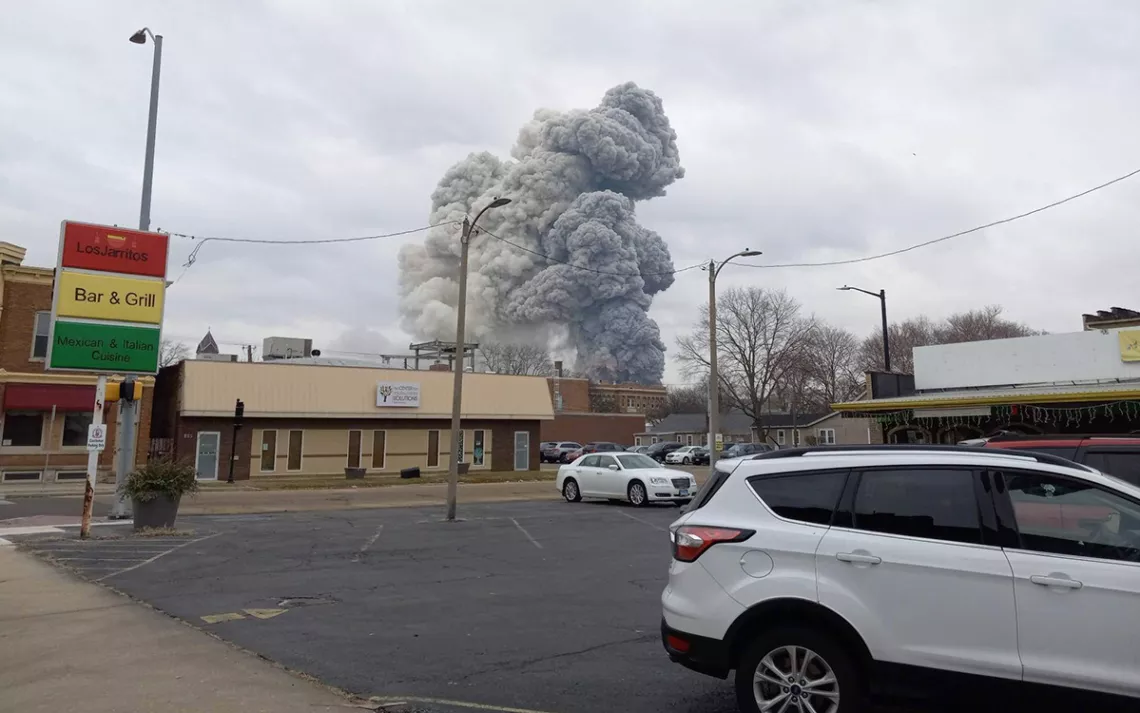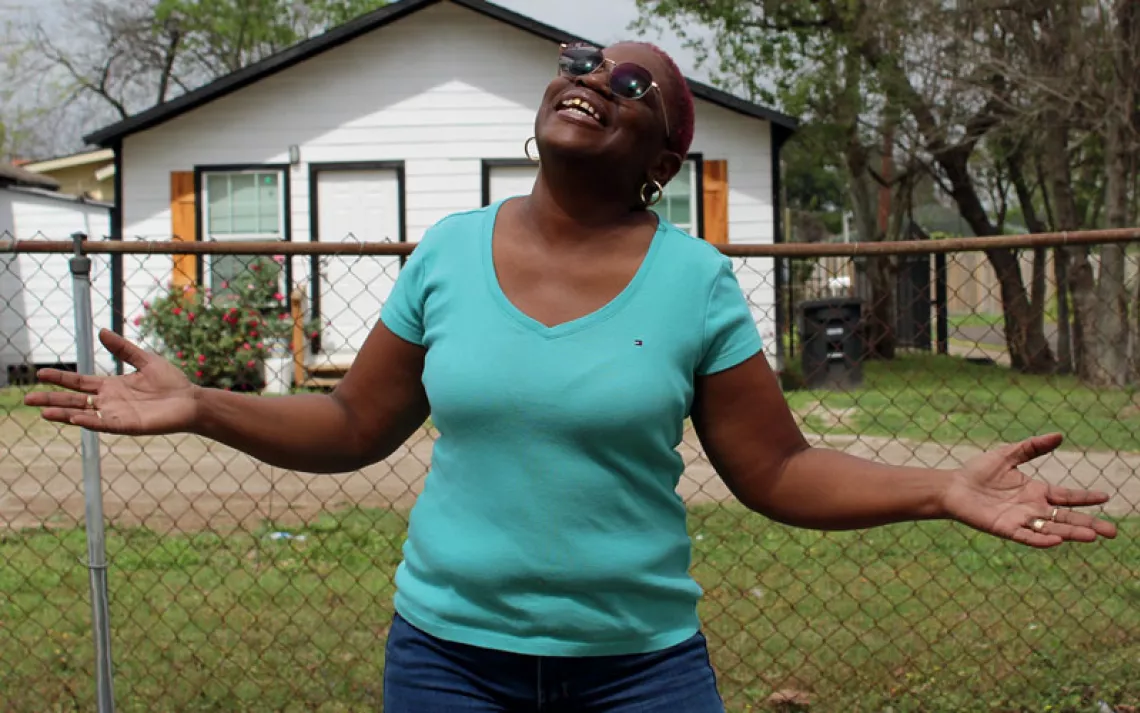Toxic Ash Is Raining Down in Illinois. It’s Time for the EPA to Step Up.
The nation’s environmental watchdog needs to enact the strongest possible protections for workers and fenceline communities

Billowing smoke hovers over Carus Chemical plant as a fire raged. Photo by Jamie Hicks.
On January 11, neon-green corrosive ash rained down onto homes, businesses, and schools in La Salle, Illinois, following a fire at the Carus Chemical Company. Residents nearby were advised to shelter in place as the harmful chemicals fell from the sky. After the ash storm finally ended, they were told it was safe to leave their homes and return to their normal lives. But for people in La Salle, there is no easy return to normal.
The scene was straight out of a disaster movie. The reactivity of the chemicals used at Carus makes them prone to catching fire, exploding, and oxidizing. For 10 hours, the fire raged, billowing black smoke that rose hundreds of feet in the air. When the heat of the fire could no longer carry the toxic dust any further, the green ash spread across the town and began accumulating on top of the Illinois River, in trees and local flora, and swirling in the air, landing on people, cars, lawns, and homes.
La Salle resident Jamie Hicks was outside when the explosion happened. As a trained hazmat responder, he jumped in his truck to see where the blaze had originated. He turned on his windshield wipers to remove the ash, and streaks of green smeared across his window. In total, nearly 10,000 people were affected by the fire and the fallout. As community members saw dust gather, they were initially told it was too dangerous to touch. Then, the local police department advised the public to clean up the mess themselves by pouring a mixture of water, hydrogen peroxide, and vinegar on the ash to “deactivate” its danger. Concerned, Hicks called his local emergency responders who admitted that they had a single generic fire response plan for the 39 industrial facilities in their district.
The toxic ash that smothered the community was just the visible impact. A terrifying invisible threat also emerged: lead and mercury. These dangerous neurotoxins are completely invisible to our senses. They are reportedly used at the facility and likely spread throughout the La Salle community after the fire. These toxins can’t be washed away with hydrogen peroxide and vinegar. Instead, they will move through the environment, from air, to land, to water, and potentially to people, plants, and animals for generations to come. Without telltale colors or odors, these cancer-causing chemicals are nearly impossible to detect and avoid.
What happened in La Salle isn’t an isolated event. These kinds of disasters happen far too often in the United States. The Coalition to Prevent Chemical Disasters has tracked 695 incidents since April 2020, confirming that the US experiences a chemical disaster incident on average every three days. Illinois alone has been home to several alarming chemical disasters in recent months, including a chemical release at Butterfield Color in December 2022 that injured two people, a vapor plume near Wells Concrete in Cary causing evacuations in November, an explosion and fire at Interco Trading Warehouse in Madison in August that killed one person, and a fire at the Chemtool lubricant factory in Rockton in June 2021, resulting in the five-day evacuation of all residents within a one-mile radius. Unfortunately, the 695 incidents tracked by the coalition are likely an undercount. That number would undoubtedly grow if more industries were required to track and report such events. For example, earlier this week in East Palestine, Ohio, a train carrying millions of pounds of vinyl chloride—a potent carcinogen that’s used to make PVC pipes, upholstery, and more—derailed, forcing thousands of residents within a two-mile radius to evacuate.
Chemical companies, like their chemicals, are reactive. Our communities deserve proactive planning. That’s why the Sierra Club and our community partners call on the Environmental Protection Agency to strengthen the requirements to prevent disasters like the one in La Salle. Right now, the EPA is in the process of updating its Risk Management Plan rules to fix Trump-era rollbacks, which define the minimum steps required for disaster planning, prevention, and safety measures at certain hazardous facilities.
A great and commonsense place to start would be to expand the number of facilities that have to abide by these rules. The strongest measures also rethink the need for highly explosive or deadly chemicals, then bolster efforts to prevent fires and explosions. When those measures fail, better fire suppression systems like sprinklers and back-up power can minimize the damages. These and other upgrades would ensure facilities can adapt to increasing extreme weather caused by the climate crisis, like storms, wildfires, and deep freezes. Moreover, these improvements are heralded by many environmental justice leaders, based on the reality that risky facilities are too often located in lower-income Black and brown communities that are already overburdened by environmental injustice.
The Carus fire is a stark reminder of the need for chemical facilities to have better risk management strategies and stronger community protections. Planning for disasters at chemical plants will not prevent all fires, spills, and poorly handled company responses, but stronger EPA rules will make incidents like the Carus fire less common and less harmful when they do occur.
We don’t have to live like this—sheltering in place and washing toxic ash off our homes and gardens. It is time for EPA to enact the strongest possible protections for workers and fenceline communities. Let’s put the health of people in La Salle and many other towns and cities across the US at the forefront and leave the toxic green ash to disaster movies.
 The Magazine of The Sierra Club
The Magazine of The Sierra Club



